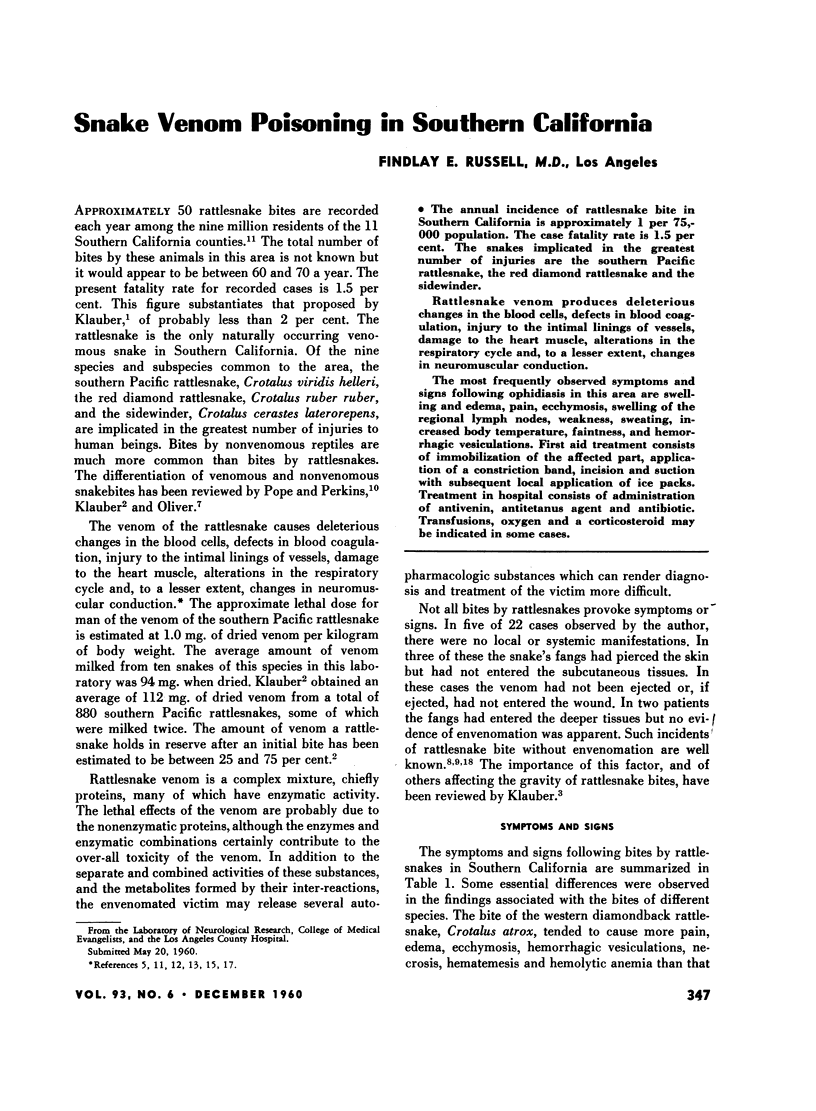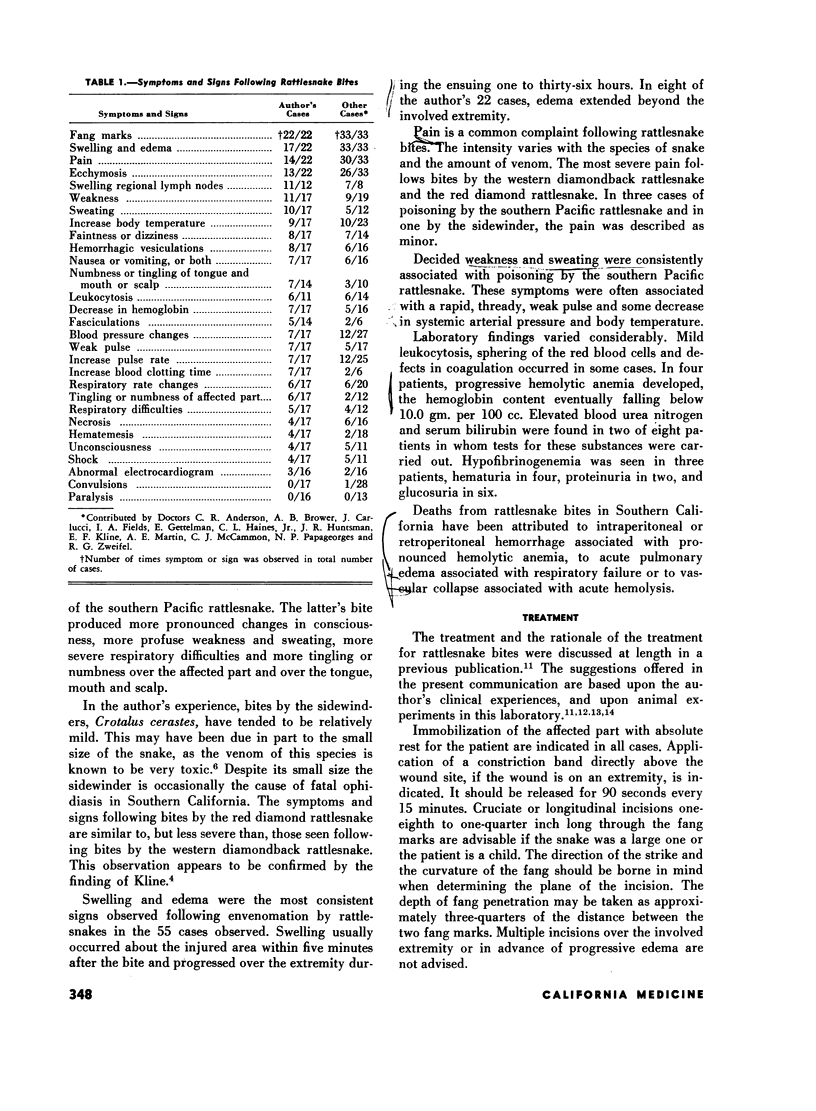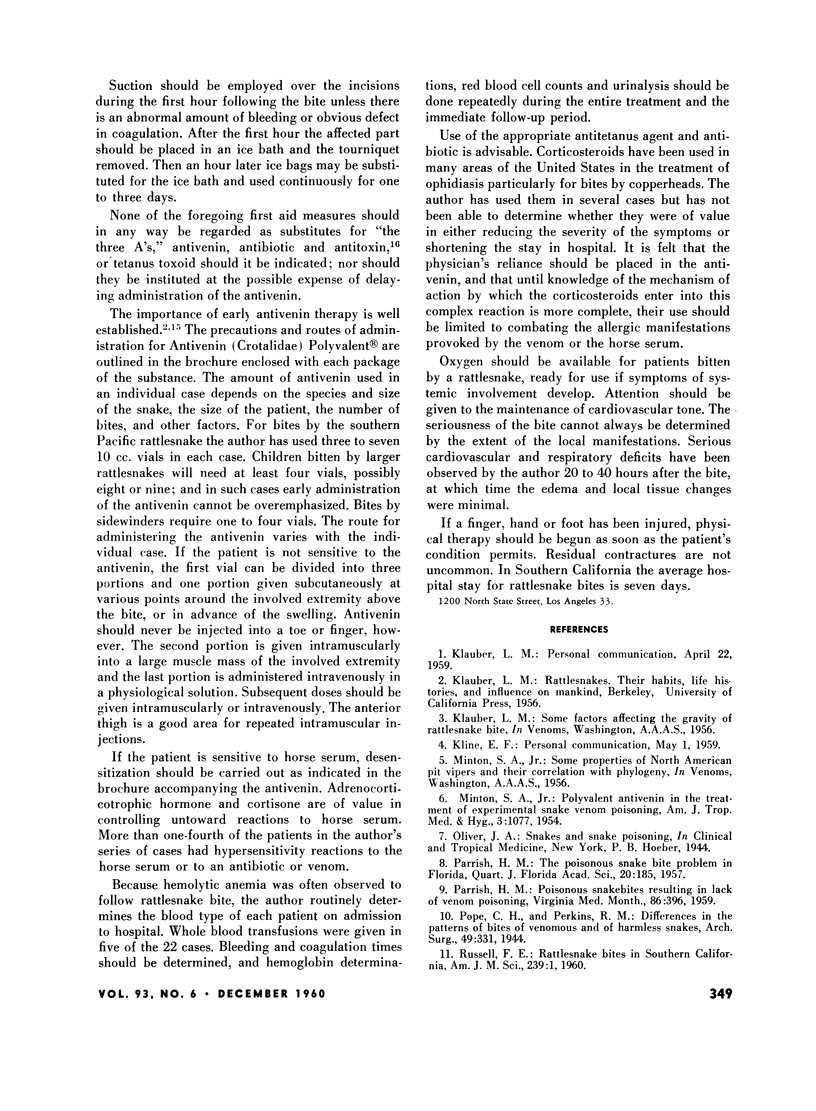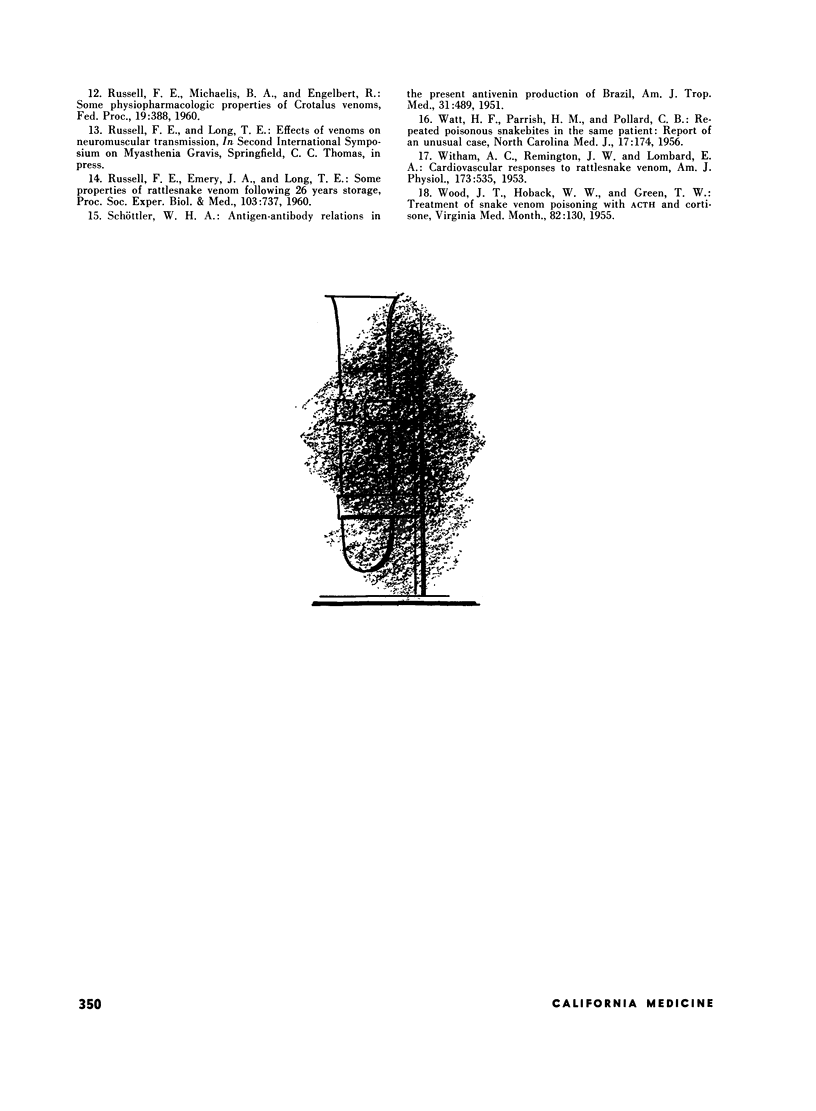Abstract
The annual incidence of rattlesnake bite in Southern California is approximately 1 per 75,000 population. The case fatality rate is 1.5 per cent. The snakes implicated in the greatest number of injuries are the southern Pacific rattlesnake, the red diamond rattlesnake and the sidewinder.
Rattlesnake venom produces deleterious changes in the blood cells, defects in blood coagulation, injury to the intimal linings of vessels, damage to the heart muscle, alterations in the respiratory cycle and, to a lesser extent, changes in neuromuscular conduction.
The most frequently observed symptoms and signs following ophidiasis in this area are swelling and edema, pain, ecchymosis, swelling of the regional lymph nodes, weakness, sweating, increased body temperature, faintness, and hemorrhagic vesiculations. First aid treatment consists of immobilization of the affected part, application of a constriction band, incision and suction with subsequent local application of ice packs. Treatment in hospital consists of administration of antivenin, antitetanus agent and antibiotic. Transfusions, oxygen and a corticosteroid may be indicated in some cases.
Full text
PDF



Selected References
These references are in PubMed. This may not be the complete list of references from this article.
- MINTON S. A., Jr Polyvalent antivenin in treatment of experimental snake venom poisoning. Am J Trop Med Hyg. 1954 Nov;3(6):1077–1082. doi: 10.4269/ajtmh.1954.3.1077. [DOI] [PubMed] [Google Scholar]
- WATT H. F., PARRISH H. M., POLLARD C. B. Repeated poisonous snakebites in the same patient; an unusual case report. N C Med J. 1956 Apr;17(4):174–179. [PubMed] [Google Scholar]
- WITHAM A. C., REMINGTON J. W., LOMBARD E. A. Cardiovascular responses to rattlesnake venom. Am J Physiol. 1953 Jun;173(3):535–541. doi: 10.1152/ajplegacy.1953.173.3.535. [DOI] [PubMed] [Google Scholar]
- WOOD J. T., HOBACK W. W., GREEN T. W. Treatment of snake venom poisoning with ACTH and cortisone. Va Med Mon (1918) 1955 Mar;82(3):130–135. [PubMed] [Google Scholar]


